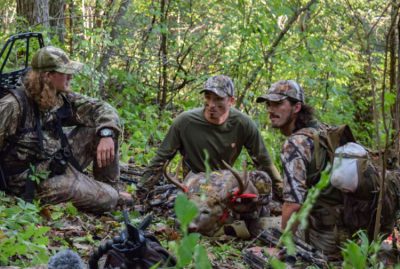West Bend, WI – West Bend Fire Department Battalion Chief Mark Forster shares four basic rules of firearm safety this hunting season –

Four Basic Rules of Firearm Safety
Essential to any responsible hunting trip is an ironclad adherence to the four basic rules of firearm safety that can be easily remembered using the TAB-K formula.
T = Treat every firearm as if it is loaded. Never assume a firearm is unloaded and never treat it that way, even if you watch as it is unloaded. Make it a habit to treat guns like they are loaded all the time.
A = Always point the muzzle in a safe direction. About one-third of all hunting incidents are self-inflicted injuries. That means the muzzle was pointed at some part of the hunter’s body. A safe direction is a direction where the bullet will travel and harm no one in the event of an unwanted discharge. There are no accidental discharges with firearms, only
unwanted discharges.
B = Be certain of your target and what’s beyond it. Positive target identification is a must. To shoot at something you only think is a legal target is gambling. In the case of human injury, that means gambling with human life. You must be absolutely certain and correct in judgment before deciding to shoot. Otherwise, it’s reckless behavior. In addition to identifying the target, a hunter must know that a safe backstop for their bullet is pre-
sent in every shooting situation.
We don’t always hit our target, and, in some cases, the bullet passes through the target. A safe backstop guarantees that no one will get hurt.
K = Keep your finger outside the trigger guard until ready to shoot. If a hunter stumbles with a firearm in one hand and nothing in the other, whatever that person does with their free hand will automatically happen with the hand holding the gun. If a finger is in-
side the trigger guard, that hand is likely going to close around the pistol grip of the gun and on the trigger causing an unwanted discharge.
Planning your fall hunting trip also means having your gear in proper working order. Firearms should be cleaned and closely inspected for any signs of mechanical wear that could result in a problem in the field.
Firearms aren’t the only items that need to be checked well in advance of a hunting trip. Clothing and other equipment should also be inspected for signs of wear and tear. Anything that might cause you to compromise safety should be repaired, discarded, or replaced. Blaze orange clothing that has faded over time, a jacket that doesn’t fit right or a
scope that isn’t adjusted correctly can compromise your safety and the safety of others.






